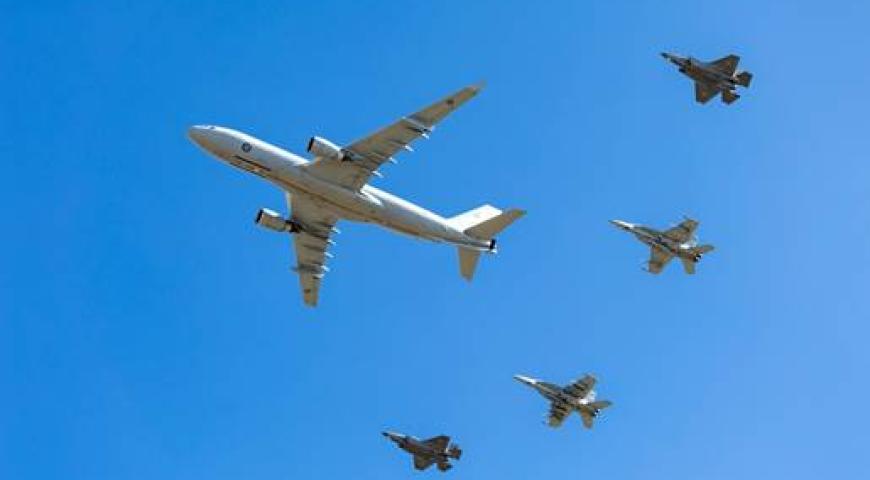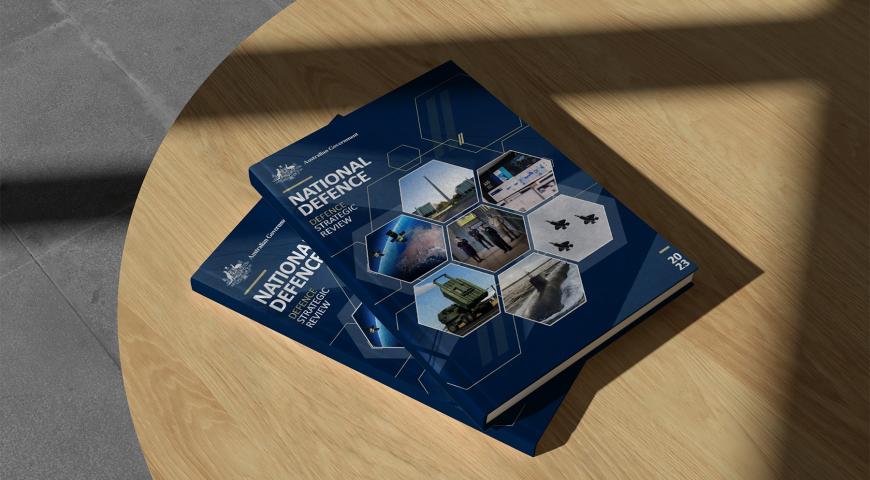Australia's National Defence Strategy (NDS) warns of an increasing likelihood of a major regional conflict. Today's Australian Defence Force (ADF) has no experience of such wars or of the protracted, large-scale combat operations they would involve. Given this, the Chief of Army believes the ADF should exploit its professional body of knowledge to become both intellectually ready and sufficiently adaptable to meet the ever-changing demands of such a conflict. He believes these attributes may be developed by studying history with the purpose of devising, as Samuel Huntington suggested, ‘principles which may be capable of future application’.[1]
A major Indo-Pacific war would be a strategic shock of a kind not experienced since December 1941 when Japan entered World War Two. The initial response to this conflict shattered Australia's existing armed forces. Yet, the military quickly recovered to help defend Australia and, with its allies, win the war. Australia's military of the early 1940s proved remarkably resilient.
A major factor of this resilience was the timely delivery of increasingly large quantities of technologically complicated war material from the domestic defence industry. Any future such conflict will again require extensive logistic support. To provide this, Australia's defence industry would need to be expanded and mobilised.
A useful historical example of such defence industry mobilisations is that of Australia, Britain and the US in World War Two. The three nations succeeded because they all had begun planning and implementing their defence industry mobilisation approaches several years before the war started. Their wartime success was built on a foundation of a prepared defence industry expansion.
This post draws on a paper planned for publication later this year that discusses the defence industrial mobilisation development activities Australia, Britain and the US undertook in the interwar period. The paper uses this analysis to inform thinking about preparing today's defence industry for a similar expansion in the context of a possible major regional conflict. The post, and the paper, use a framework of four alternative high-level resilience objectives that military forces can choose from when planning. The resilience objective chosen shapes how a defence industry might be best mobilised. This has flow-on implications because the manner in which defence industry mobilises then further influences the military strategy options.
| Deterrence Tasks | |||
| Collective Defence | Independent National Defence | ||
| Attrition Rate | Low | recovering from a shock to the original form | continuing operation in the presence of a shock |
| High | surviving a shock in some reduced form | absorbing a shock and evolving in response | |
Resilience conceptualisation
The NDS considers resilience ‘central to effective deterrence’.[2] Resilience involves recovery from a shock and can broadly vary from: surviving a shock in some reduced form; continuing operation in the presence of a shock; recovering from a shock to the original form; to absorbing a shock and evolving in response.[3]
The NDS sets out that achieving deterrence requires making ‘a credible contribution to a favourable regional strategic balance and being able to hold at risk forces likely to target Australian interests'.[4] In broad terms, this encompasses being able to undertake collective defence (most likely with the US) and an independent national defence. In undertaking either of these two missions in the context of a major conflict, attrition of the force will be experienced and, although uncertain, could in simple terms range from low to high. In the table above these four factors are combined with the four resilience end states to create scenarios useful when thinking about defence industry mobilisation options.
| Deterrence Tasks | |||
| Collective Defence | Independent National Defence | ||
| Attrition Rate | Low | recovering from a shock to the original form | continuing operation in the presence of a shock |
| High | surviving a shock in some reduced form | absorbing a shock and evolving in response | |
Surviving a shock in a reduced form
This resilience objective might be chosen in a scenario involving collective defence and high force attrition. In a major conflict, the coalition may decide to fight a short, sharp war to try to win quickly and so avoid a protracted war with a great power that might have superior mobilisation potential.
The survival of specific key elements beyond the war becomes the measure of resilience success. Using Army as an illustrative example, the survival of capabilities useful in post-war national responses to major natural disasters—such as civil engineers, heavy-lift helicopters and landing craft—may demonstrate resilience success. Being able to operate these capabilities post-war requires safeguarding the necessary skilled people, the particular capabilities involved, the requisite maintenance equipment and maintenance item stockpiles on hold. A major driver is how long the capabilities might need to remain effective in the post-war period before the global supply chains supporting them resume.
Australia already possesses competent maintenance, repair and overhaul facilities adequate for normal circumstances. However, without access to the global support chain a better ability to undertake structural repairs might be needed, including making heavy steel plates for ship hull repairs and improved precision machining for aircraft structures. In addition, engine parts may be hard to source, which implies locally fabricating complex metal parts. Control systems bring their own complications. Inevitably, there will be issues of the original equipment manufacturers releasing the Intellectual Property (IP) information necessary.
An approach might be to use the British interwar agency factory concept of building government-owned supplementary facilities near existing maintenance, repair and overhaul facilities. These agency facilities would be run by the existing contractor. The aim would be that the combination of the old and new maintenance, repair and overhaul facilities would be able to keep the necessary capabilities operating for up to two years independently of offshore support.
Additionally, stockpiles of maintenance items that were considered too difficult to fabricate in Australia could be established near these agency facilities. The scale of these stockpiles, and the variety of items held, would depend on their expected frequency of use.
| Deterrence Tasks | |||
| Collective Defence | Independent National Defence | ||
| Attrition Rate | Low | recovering from a shock to the original form | continuing operation in the presence of a shock |
| High | surviving a shock in some reduced form | absorbing a shock and evolving in response | |
Continuing operation in the presence of a shock
This resilience alternative may be selected if undertaking an independent national defence in an environment of low force attrition. Therefore, independent national operations imply that technically sophisticated equipment, if lost, will not be able to be replaced until post-war. Using Army again as a case in point, such equipment could include armoured and mechanised vehicles, artillery, helicopters and specialised logistic transport assets. However, low attrition suggests being able to continue for about a year before more than half the peacetime technically sophisticated equipment is lost. Combat operations would then be a prudent balance between keeping rates of attrition low and the military strategy's demands.
In support terms, the highest use items are likely to be weapons and maintenance. For weapons production, an approach used by Australia interwar may be employed. During peacetime, the range of munitions assessed as required in such a scenario would be produced at multiple new and old government-owned and operated facilities. Agreements would be made with weapons manufacturers to transfer the IP necessary for Australia to both optimise the designs for Australian conditions and to manufacture them in Australia. Weapons manufacturers will be reluctant to transfer such IP if a competitor could access it or if Australia was assessed as likely to set up a competing weapons production line. Government-operated facilities can overcome this resistance, albeit at a cost.
As part of this, government-funded supplementary armament annexes would also be established in peacetime near each appropriate government facility. These would remain dormant until required by wartime demands. In peacetime, the equipment needed to establish such annexes would be readily available for installation, whereas after war starts this may be unlikely.
An important early decision would be concerning deeper level maintenance. If this level of maintenance is not done in Australia during a conflict, the reliability of the impacted force elements will decline. This may be acceptable in a one-year war.
Regardless, operational level maintenance will be essential and this will need access to stockholdings of the parts, components and consumables needed for the year of a higher than normal rate of effort. Additional warehousing facilities would need to be built in peacetime and stocked with the necessary items to allow wartime maintenance independent of global supply chains.
| Deterrence Tasks | |||
| Collective Defence | Independent National Defence | ||
| Attrition Rate | Low | recovering from a shock to the original form | continuing operation in the presence of a shock |
| High | surviving a shock in some reduced form | absorbing a shock and evolving in response | |
Recovering from a shock to the original form
This alternative is perhaps how most view resilience. The measure of success is then the time taken to return to the pre-existing force structure in a broadly functional sense. This would involve rebuilding a damaged force while recruiting and training new personnel to replace those lost.
This resilience alternative might be adopted if Australia undertook collective defence in a low attrition environment. Helpfully, the particular contribution Australia made to such a coalition operation (presumably led by the US) would be Australia's choice to make, while the US and its partners would be under some obligation to help sustain Australia's contribution. However, the US and other coalition partners' industrial bases would be stressed and doubtless giving priority to their own needs first. Resupplying Australia may take time, probably several months and maybe years.
Munitions might be the highest usage item. These could be resupplied by accessing the global supply chain and, in particular, US weapon suppliers. However, there is a high likelihood that the munitions available would be limited in type and with erratic delivery. Australia's contribution to the collective defence operation envisaged would then be shaped by the global munitions supply chain.
An alternative pathway is to adopt the Australian interwar approach to weapon production as earlier described. In this scenario though, Australian weapon production lines will be expected to also supply allies and partners, and therefore may need to have a larger capacity than in the previous resilience objective. Additional government-funded armament annexes might need to be built in such a situation.
Operational and deeper level maintenance issues would be eased in this scenario, as it is assumed access to US and other supply chains remains available. It would then be a matter for other countries as to Australia's resupply priority. An assessment of how others might make this judgement would inform the type and scale of stockpiles Australia decides to hold in peacetime. Maintenance resupply times would determine how long Australia could be involved in the coalition's operations.
| Deterrence Tasks | |||
| Collective Defence | Independent National Defence | ||
| Attrition Rate | Low | recovering from a shock to the original form | continuing operation in the presence of a shock |
| High | surviving a shock in some reduced form | absorbing a shock and evolving in response | |
Absorbing a shock and evolving in response
For Australia, a worst-case scenario might be undertaking an independent national defence in a high attrition environment. The large-scale invasion by Russia of Ukraine in February 2022 is a real-world example of such a scenario. Ukrainian forces suffered high attrition rates in equipment. While some was made up by obtaining military supplies from other nations, the high losses also forced a rethink on force employment and force structures. This reconsideration particularly concerned those elements that could not be quickly replaced, such as aircraft, helicopters, naval vessels, tanks and artillery. To remain in the fight required change.
This resilience state is the most difficult to undertake, particularly under the stresses imposed by ongoing conflict. However, developments in digital technology and its proliferation across most societies have made such resilience more achievable than previously.
In this scenario, the pre-existing peacetime force structure quickly declines. Consequently, significant pre-war preparations that allow a rapid force evolution on demand need to be made. A mix of defence industry approaches might be efficacious.
Weapons production could use the Australian interwar approach described earlier. To recap, this uses multiple government owned and operated factories (to overcome IP issues) each producing various weapon types with an expansion capability in-place comprising dormant armament annexes near each factory.
The same Australian interwar approach could also be used for developing new innovative technologies to a maturity level appropriate to being manufactured. As the government then owns the IP and when wartime demands required, the design of these technologies could then be quickly passed onto shadow factories to mass produce. Shadow factories were an interwar British concept involving a government funded and owned factory building another's product but being operated by a third party contractor. While useful, this approach by is unlikely to provide the full breadth of new capabilities at the speed required.
To address this, government-owned, contractor-operated facilities (a US interwar approach) run by pre-selected private companies could also be established to continually work on developing innovative technologies. These companies might further use government funding to build dormant, mass production shadow or agency factories capable of quick activation to manufacture at scale the innovations the companies have devised. At times, the shadow option would be preferable as some companies may be better at mass production than innovation; the agency concept assumes a company is good at both aspects. Both options should include extensive use of subcontractors (explained further in the paper noted).
A significant problem in this mix of methods is their operation in an environment of ongoing rapid innovation and fast design change. The network of facilities involved would need establishing well before a conflict to have the processes, subcontractors and skilled staff in place to allow a quick start on demand. Easing this somewhat is that the production is probably of lightweight small items, rather than large platforms such as warships. The facilities involved may be able to exploit 3D printing, precision machining, composite fabrication and rapid production refreshes to very quickly meet new operational demands. An extreme example is FPV drones: one Ukrainian manufacturer is producing 4,000 a day with the country overall making 5 million annually.[5]
The Ukraine war has demonstrated that a military experiencing high equipment attrition rates can be rebuilt, evolve and expand as necessary. However, Ukraine was able to survive long enough to evolve through having a moderately large defence force, being resupplied from neighbouring and offshore countries, and having an existing domestic defence industry.
Conclusion
In Australia's last big war the role of the defence industry was pivotal. Without industry, the war could not have been fought or won. If there is another big war, defence industry will be equally important. However, as was done before World War Two, steps will need to be taken that allow a timely expansion of defence industry if and when a conflict starts. These steps will vary depending on the resilience objective chosen. Now is the time to consider, plan and implement these foundational steps.
1. Simon Stuart, ‘The Challenges to the Australian Army Profession’, army.gov, 25 November 2025,https://www.army.gov.au/news-and-events/speeches-and-transcripts/2024-11-25/challenges-australian-army-profession.
2. National Defence Strategy 2024 (Canberra: Defence, 2024), p. 27.
3. Brenton Prosser and Colin Peters, 'Directions in Disaster Resilience Policy', The Australian Journal of Emergency Management, Vol. 25, No. 3, July 2010, pp. 8-11, p. 8.
4. National Defence Strategy, op.cit., p. 22-23.
5. Martin Fornusek, ‘Ukraine has capacity to produce 5 million FPV drones per year, advisor says’, The Kyiv Independent, March 29, 2025,https://kyivindependent.com/ukraine-can-produce-5-million-drones-per-year-advisor-says/.
Defence Mastery
Preparing Australia's Defence Industrial Base for Major Conflict © 2025 by . This work is licensed under CC BY-NC-ND![]()
![]()
![]()
![]()
Please let us know if you have discovered an issue with the content on this page.
Comments
Start the conversation by sharing your thoughts! Please login to comment. If you don't yet have an account registration is quick and easy.




